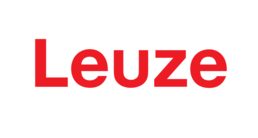
HVH Industrial Solutions is a distributor of high-quality sensors
HVH Industrial Solutions provides a wide variety of sensors necessary for your automation activities. The sensor is to identify the progressions in electrical or physical or other quantities and in a way to deliver a yield as an affirmation of progress in the quantity. In general, Industrial Automation Sensors are input devices that provide an output (signal) concerning a specific physical quantity (input).
We offer different types of sensors:
- Fiber Optic Sensors
- Rotary Sensors
- Photoelectric Sensors
- Pressure Sensors
- Proximity Sensors
HVH Industrial works with the specialized engineering teams of manufacturers to meet the requirements and highest quality standards of our customers.
If you have any questions write us via live chat, (one of our team members will answer your questions), give us a call or send us a quote request. The HVH team is always ready to help you.
 1(866)577-4040
1(866)577-4040
or
Sensors
Manufacturers
What are Sensors
Industrial Automation Sensors are devices that act as input devices in automated systems, facilitating the collection of data from the manufacturing environment. They effectively bridge the gap between the physical world and digital systems, providing real-time data for analysis and decision-making.
These sensors are designed to detect changes in specific physical quantities, such as temperature, pressure, proximity, or light. As the measured quantity undergoes alterations, the sensors respond by producing an output signal that affirms the change and feeds it into the automation system.
By offering real-time data, Industrial Automation Sensors enable manufacturers to monitor and control various processes with precision. This optimization leads to improved efficiency, reduced downtime, and enhanced overall productivity.
Types of Industrial Automation Sensors
The market offers a diverse array of Industrial Automation Sensors, each tailored to fulfill specific purposes in the manufacturing ecosystem.
Fiber Optic Sensors
Fiber Optic Sensors rely on the principle of light transmission through optical fibers. They find applications in harsh and challenging environments where traditional sensors might fail, such as areas with extreme temperatures or high electromagnetic interference.
Rotary Encoders
Rotary Encoders are essential in tracking the angular position of rotating components in machinery. They provide crucial feedback that helps in controlling motor speed, position, and direction, thus ensuring precise movements.
Photoelectric Sensors
Photoelectric Sensors use light beams to detect the presence or absence of an object. They are widely utilized in automated assembly lines, packaging, and quality control, where precise object detection is necessary.
Pressure Sensors
Pressure Sensors are instrumental in measuring pressure changes in pneumatic and hydraulic systems. They play a critical role in ensuring the safety and efficiency of various industrial processes.
Proximity Sensors
Proximity Sensors are designed to detect the presence of objects without physical contact. Their non-invasive nature makes them indispensable in automated door systems, security devices, and assembly lines.
Advantages of Industrial Automation Sensors
Streamlined Operations
Industrial Automation Sensors contribute to streamlining operations by reducing manual interventions, minimizing errors, and maximizing efficiency.
Enhanced Quality Control
By providing real-time feedback and data, these sensors enable manufacturers to implement stringent quality control measures, leading to improved product quality and consistency.
Improved Workplace Safety
With the ability to detect potential hazards promptly, Industrial Automation Sensors contribute significantly to enhancing workplace safety, protecting both human operators and machinery.
Conclusion
In conclusion, Industrial Automation Sensors have revolutionized the manufacturing landscape by providing real-time data, optimizing processes, and enhancing overall efficiency. These crucial devices act as the backbone of automated systems, enabling manufacturers to keep up with the demands of a rapidly evolving industry. As we look toward the future, it is clear that the potential for further advancements in sensor technology is limitless, promising even more significant strides in the world of industrial automation.












